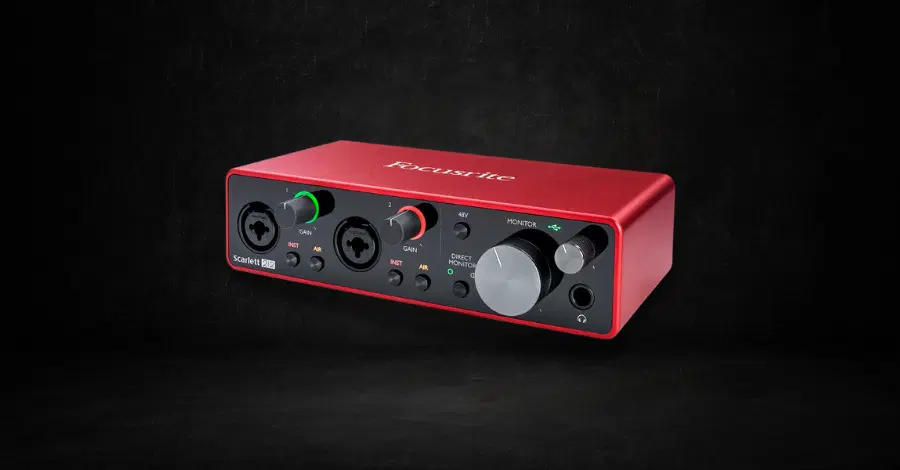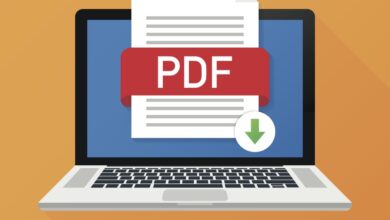
How to Choose the Best Audio Interfaces for 2023? In the ever-evolving world of music production, audio interfaces play a vital role in achieving professional-level recordings. With 2023 just around the corner, it’s crucial to stay up-to-date with the latest technology and choose the best audio interfaces that meet your specific needs. This article will guide you through the process of selecting the ideal audio interface that aligns with your requirements and budget.
Understanding Audio Interfaces
Audio interfaces are external devices that serve as the bridge between your computer and other audio equipment, such as microphones, instruments, and studio monitors. They convert analog audio signals into digital format and vice versa. Understanding the basics of audio interfaces will help you make informed decisions during your selection process.
Assessing Your Recording Needs

Before diving into the world of audio interfaces, it’s crucial to assess your specific recording needs. Consider the type of content you create, the number of inputs and outputs required, and the nature of your recording environment. This assessment will help you narrow down your choices and prevent overspending on unnecessary features.
Connection Types and Input/Output Count
Different audio interfaces offer various connection options, including USB, Thunderbolt, and PCIe. Choose one that is compatible with your computer and provides stable data transfer rates. Additionally, consider the number of inputs and outputs the interface offers. Ensure it has enough inputs for your microphones and instruments and sufficient outputs for your studio monitors and headphones.
Audio Resolution and Sample Rate

Audio resolution and sample rate significantly impact the sound quality of your recordings. Higher resolution and sample rates provide more detail and accuracy. For professional-grade recordings, opt for an audio interface with at least 24-bit resolution and a sample rate of 96kHz or higher.
Preamps and Sound Quality
Preamps play a crucial role in capturing the sound of your microphones and instruments. High-quality preamps result in cleaner, more accurate recordings. Look for an audio interface with reputable preamps that ensure excellent sound quality.
Compatibility with Your Setup
Ensure the audio interface you choose is compatible with your existing setup, including your computer, operating system, and recording software. Compatibility issues can lead to frustration and hinder your creative process.
Consideration for Mobile Recording
If you require mobility for your recordings, consider portable audio interfaces. These compact devices are perfect for recording on the go and are often powered via USB, making them convenient for laptop-based setups.
Budget Considerations
Audio interfaces come in a wide price range. Set a budget that aligns with your recording needs and stick to it. While high-end interfaces offer premium features, there are excellent mid-range options that cater to most recording requirements.
User-Friendly Features
A user-friendly interface with intuitive controls can enhance your recording experience. Look for interfaces with easy-to-use features and software that simplifies your workflow.
Brand Reputation and Customer Reviews

Research the reputation of the brand and read customer reviews before making your decision. A well-established brand with positive reviews is likely to provide a reliable and satisfying user experience.
Future-Proofing Your Investment
Investing in an audio interface with up-to-date technology and future-proof features ensures that it remains relevant for years to come. Consider the longevity of your chosen interface and its ability to adapt to changing recording technologies.
Read More: The Role of Education in Sustainability In 2023
Upgrading Options and Expandability
As your recording needs evolve, you may require additional inputs or advanced features. Choosing an audio interface with expandability options or upgradeable components will save you from having to replace the entire unit in the future.
Bundled Software and Plugins
Many audio interfaces come with bundled software and plugins that add value to your purchase. These software packages often include recording and mixing tools that can kick-start your music production journey.
Warranty and Customer Support
Reliable warranty coverage and excellent customer support are crucial for peace of mind. Ensure the manufacturer provides adequate support and assistance should you encounter any issues with your audio interface.
Finalizing Your Decision
After considering all the factors mentioned above, narrow down your options to a shortlist of audio interfaces that best meet your requirements. Compare their features, prices, and user reviews to make an informed final decision.
Conclusion
Selecting the best audio interface for your music production endeavors is a crucial step towards achieving professional-quality recordings. By understanding your recording needs, considering essential features, and factoring in budget constraints, you can find an audio interface that elevates your creative process. Embrace the advancements in technology and make an investment that will enhance your music production journey for years to come.
FAQs
Q: Can I use an audio interface with my smartphone for recording on the go?
A: Yes, many modern audio interfaces are compatible with smartphones and tablets, allowing for mobile recording.
Q: What is the difference between USB and Thunderbolt connections?
A: USB connections are more common and offer decent data transfer rates, while Thunderbolt connections provide faster data transfer, ideal for high-track count recordings.
Q: Do I need a high-end audio interface for basic home recording?
A: Not necessarily. There are many mid-range audio interfaces with excellent features that cater to most home recording needs.
Q: Can I use an audio interface with my digital piano?
A: Yes, most audio interfaces have inputs suitable for connecting instruments like digital pianos.
Q: Are there audio interfaces specifically designed for podcasting?
A: Yes, some audio interfaces come with features tailored for podcasters, such as dedicated headphone outputs and monitoring controls.











